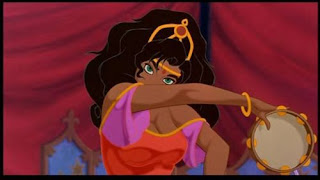 The term gypsy (or gipsy) has several overlapping meanings.
The term gypsy (or gipsy) has several overlapping meanings.
[1] Initially the word was used to refer to the Romani people, who first appeared in England at about the beginning of the 16th century. Although in certain contexts it is still used to describe the Romani, it also describes those in English speaking countries who live a lifestyle similar to that of the Romani.
The word "Gypsy" derives from the word for "Egyptian" in Latin, the same as the Spanish "Gitano" or the French "Gitan." It emerged in Europe, in the 15th century, after their migration into the land of the Romani people (or Roma) in that continent.
[2] Gypsys received the name from local people either because they spread in Europe from an area named Little Egypt, in Southern Balkans, or because they fit the European image of dark-skinned Egyptians skilled in witchcraft. During the sixteenth and seventeenth centuries Egypt was written in various ways: Egipcian, Egypcian, 'Gipcian, 'Gypcian.
[3] As the time elapsed, the notion of Gypsy evolved including other stereotypes, like nomadism and exoticism (strikingly unusual or strange in effect or appearance). [4] John Matthews in The World Atlas of Divination refer to gypsies as "Wise Women."
[4] John Matthews in The World Atlas of Divination refer to gypsies as "Wise Women."
{Wikipedia}
Needless to say, the gypsy trend has taken on a whole new meaning in the fashion world. What was then gypsy is now being referred to as Bohemian chic.
 You may remember Esméralda, ^ from The Hunchback of Notre Dame, a gorgeous exotic looking femme who distracts men with her seductive dances and is rarely seen without her clever goat. Well, her look is now being mimicked in the world of fashion by the likes of designers Festive 05, Ella Zahlan and
You may remember Esméralda, ^ from The Hunchback of Notre Dame, a gorgeous exotic looking femme who distracts men with her seductive dances and is rarely seen without her clever goat. Well, her look is now being mimicked in the world of fashion by the likes of designers Festive 05, Ella Zahlan and
Raffaella Curiel...
 (Above) "Kamal Sidhoo, Miss India Canada 1992, and an eminently successful model and anchor on several international television channels, modelling the Festive 05 collection. Showing off a crinkled gypsy style skirt and ethnic top with mojdis."
(Above) "Kamal Sidhoo, Miss India Canada 1992, and an eminently successful model and anchor on several international television channels, modelling the Festive 05 collection. Showing off a crinkled gypsy style skirt and ethnic top with mojdis."

No comments:
Post a Comment